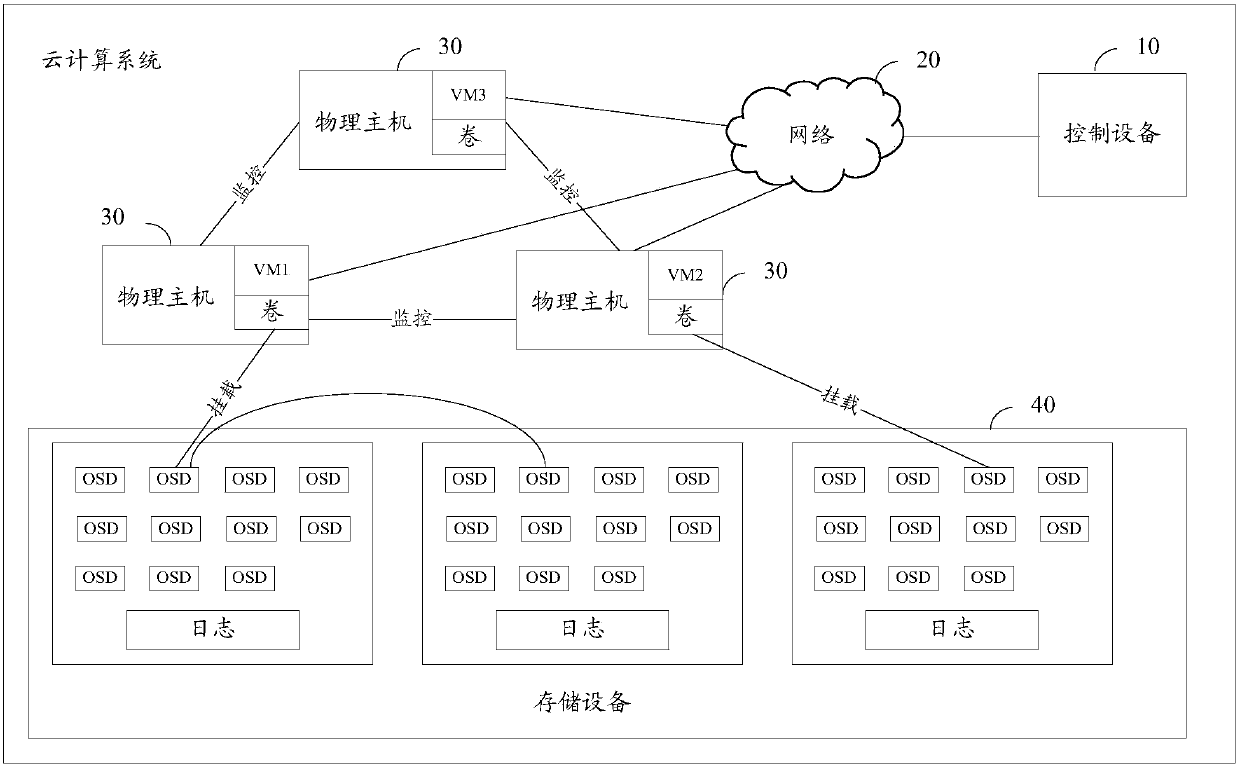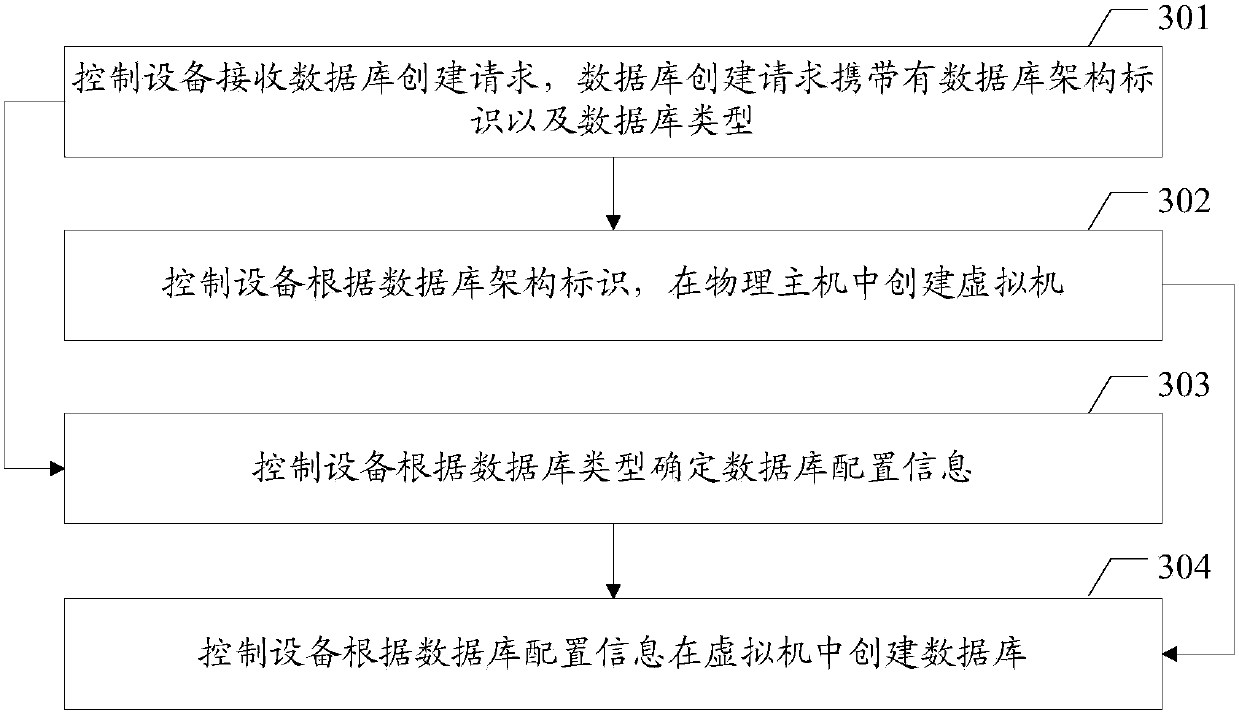Database deployment method, database deployment device, control equipment and system
A technology for controlling equipment and deploying devices, which is applied in the database field, can solve the problems of time increase and low efficiency of manual configuration, and achieve the effect of improving efficiency and reducing the time used
- Summary
- Abstract
- Description
- Claims
- Application Information
AI Technical Summary
Problems solved by technology
Method used
Image
Examples
Embodiment Construction
[0031] The database deployment method of the present invention is mainly applied to the cloud computing system, and the cloud computing system will be described below, please refer to figure 1 , the cloud computing system includes a control device 10 , a network 20 , multiple physical hosts 30 and a storage device 40 .
[0032] The control device 10 is generally realized by a server. The control device includes an application programming interface (Application Programming Interface, API for short), a message queue, a scheduler and other functional components. There can be multiple schedulers and other functional components.
[0033] API: The access module of the control device, all client devices interact with the control device through the API component. The API component is responsible for verifying the parameters of the request packet of the virtual machine creation request, routing the request, and distributing it to other components in the system. For asynchronous task...
PUM
 Login to View More
Login to View More Abstract
Description
Claims
Application Information
 Login to View More
Login to View More - R&D
- Intellectual Property
- Life Sciences
- Materials
- Tech Scout
- Unparalleled Data Quality
- Higher Quality Content
- 60% Fewer Hallucinations
Browse by: Latest US Patents, China's latest patents, Technical Efficacy Thesaurus, Application Domain, Technology Topic, Popular Technical Reports.
© 2025 PatSnap. All rights reserved.Legal|Privacy policy|Modern Slavery Act Transparency Statement|Sitemap|About US| Contact US: help@patsnap.com



